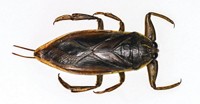Advertisement
Grab your lab coat. Let's get started
Welcome!
Welcome!
Create an account below to get 6 C&EN articles per month, receive newsletters and more - all free.
It seems this is your first time logging in online. Please enter the following information to continue.
As an ACS member you automatically get access to this site. All we need is few more details to create your reading experience.
Not you? Sign in with a different account.
Not you? Sign in with a different account.
ERROR 1
ERROR 1
ERROR 2
ERROR 2
ERROR 2
ERROR 2
ERROR 2
Password and Confirm password must match.
If you have an ACS member number, please enter it here so we can link this account to your membership. (optional)
ERROR 2
ACS values your privacy. By submitting your information, you are gaining access to C&EN and subscribing to our weekly newsletter. We use the information you provide to make your reading experience better, and we will never sell your data to third party members.
Education
Newscripts
Baby BattleMech, Molecular Spider, Gory Gourd
by Bethany Halford
October 25, 2010
| A version of this story appeared in
Volume 88, Issue 43

Halloween is nigh, and although the upcoming parade of costumes and the candy delight most, the Newscripts gang knows there are those who dread a long door-to-door slog with pint-sized companions who complain about carrying heavy treat bags. If you're among this curmudgeonly crew, the engineers at Japan's Sakakibara Kikai have come up with a costume that might make your Halloween a little less harrowing—assuming you've got $21,000 to spare and can arrange express freight shipping from Japan, that is.
According to Gizmag.com, Sakakibara Kikai's new KID'S WALKERis a gasoline-powered exoskeleton designed especially for children. You may recall that several years ago Sakakibara Kikai introduced the Land Walker—an 11-foot-tall bipedal exoskeleton that shoots squishy rubber balls from gun turrets mounted on its flanks.
The company's new child-sized version of this BattleMech is bright red, stands just over 5 feet high, and weighs in at 400 lb. With your little goblin behind the Kid's Walker's controls, he can stroll around the neighborhood with ease. No need to worry about schlepping a heavy bag of treats either—the Kid's Walker has pincers that will haul that loot for him. We'd also bet that neighborhood bullies will think twice before trying to steal his candy.
Chemists in Europe have developed a different kind of walker that's appropriately spooky for the season. A team led by Nicola Armaroli of Italy's Institute for Organic Synthesis & Photoreactivity and Davide Bonifazi of Belgium's University of Namur have created a molecular spider (Chem. Commun., DOI: 10.1039/c0cc03045g).
The CREEPY-CRAWLY CHEMICAL has a pyrene body tetrasubstituted with four photoswitchable azobenzenyl ethynyl legs. The amine that ends each leg is attached to two six-carbon chains, giving the molecule the characteristic eight-legged arachnoid appearance. The researchers hope that light-induced cis-trans isomerization of the azobenzene groups will give the molecule mobility, letting it creep into the edges of their Erlenmeyer flasks.
And because it's the season for VINE-BASED VEGGIES, forensic researchers have given us a tale of a gory gourd from the French Revolution. Legend has it that when France's King Louis XVI was beheaded in 1793, onlookers rushed the guillotine scaffold to soak their handkerchiefs in royal blood.

One such sullied piece of silk made its way into a decorative gunpowder gourd, according to scribblings on the squash. Although the skanky hanky has been lost, blood remains inside the gourd. Now, scientists led by Carles Lalueza-Fox of Spain's Pompeu Fabra University have analyzed the antique veggie to see whether it indeed bears the blood of unlucky Louis. Their report appears in the journal Forensic Science International: Genetics (DOI: 10.1016/j.fsigen.2010.09.007).
Biochemical analysis confirms that the material is indeed blood, and DNA analyses indicate that it belonged to a blue-eyed male with an unusual genetic makeup, a description that fits the guillotined king. For concrete confirmation, the researchers need to find a descendant of either the monarch or his mother. Ideally, they'd like to get their hands on the heart of Louis XVII—the son of Louis XVI who died from poisoning in 1795 at age 10—which now resides in a crystal vase at Paris' Cathedral Basilica of St. Denis. They acknowledge that gaining such access would be quite a coup.






Join the conversation
Contact the reporter
Submit a Letter to the Editor for publication
Engage with us on Twitter